
Before getting into this iQOO 11 review, let’s first talk about the chip powering this phone itself. It’s been a few months since Qualcomm announced its flagship mobile processor for 2023—the Snapdragon 8 Gen 2. While the Chinese market has already gotten to play with this chip, it’s now steadily popping up in the international market as well. And in India, the iQOO 11 is the first phone to come with Qualcomm’s latest chip. It costs INR 59,999 for the 8/256GB model and INR 64,999 for the 16/256GB configuration.
| iQOO 9 | iQOO 9T | iQOO 11 | |
| 8/128GB | INR 42,990 | INR 49,999 | N/A |
| 8/256GB | N/A | INR 59,999 ↑ | |
| 12/256GB | INR 46,990 | INR 54,999 | N/A |
| 16/256GB | N/A | INR 64,999 ↑ | |
| Bank discount | (INR 4,000) | (INR 4,000) | (INR 5,000) |
Ouch—compared to the iQOO 9 or the iQOO 10 that launched under the iQOO 9T disguise in the Indian market, that is quite a steep price jump.
Even after considering all the bank discounts and other benefits. I’ve been using the iQOO 11 for a couple of weeks now and I really wanted to see if the iQOO 11 actually manages to deliver a flagship-level experience to justify that price tag. Or are you better off with the competition like Google’s Pixel 7, the new OnePlus 11, or even last year’s iPhone 13? Let’s find out from our iQOO 11 review.
iQOO 11 Review: Specifications
- Body: 77.07 x 164.86 x 8.4–8.72mm, 205–208gm, Glass front/back, Aluminum frames, Organic silicone leather (Legend finish), No IP rating
- Display: 6.78-inches E6 AMOLED panel, Up to 144Hz refresh rate, 300Hz touch sampling rate, Gorilla Glass Victus, LTPO 4.0, HDR10+
- Other Properties: 1100 nits (typ) brightness, 1800 nits (HDR) brightness, 1440Hz PWM dimming, ΔE≈0.3
- Resolution: 2K QHD (3200 x 1440 pixels), 517 PPI, 20:9 aspect ratio
- Chipset: Qualcomm Snapdragon 8 Gen 2 5G (4nm mobile platform)
- CPU: Octa-core:
– 1x Cortex-X3 (3.2 GHz)– 2x Cortex-A715 (2.8 GHz)
– 2x Cortex-A710 (2.8 GHz)
– 3x Cortex-A510 (2.0 GHz) - GPU: Adreno 740
- Memory: 8/12/16GB LPDDR5X RAM, 128GB UFS 3.1 storage or 256/512GB UFS 4.0 storage (fixed)
- Software & UI: Android 13 with Vivo’s Funtouch OS 13 on top
- Rear Camera: Triple (with dual LED flash);
– Wide: 50MP Samsung ISOCELL GN5, f/1.88, 1/1.57″ sensor, OIS
– Ultrawide: 8MP, f/2.2, 120° FoV
– Telephoto: 13MP, f/2.46, 2x optical / 20x digital zoom - Front Camera: 16MP, f/2.45 sensor (hole-punch cutout)
- Audio: Built-in stereo speakers, No 3.5mm headphone jack
- Security: In-display fingerprint sensor (optical)
- Sensors: Accelerometer, Ambient light, E-compass, Gyroscope, Proximity, Infrared (IR blaster)
- Connectivity: Dual-SIM (Nano), WiFi 6 a/b/g/n/ac/ax (Dual-band), Bluetooth 5.3, GPS / AGPS / Galileo / Glonass / QZSS / Beidou / GNSS / NavIC, USB-C port, NFC, 4G LTE (VoLTE), Dual 5G
- Battery: 5000mAh with 120W fast charging (120W adapter provided)
- Color Options: Legend, Alpha, Isle of Man Special Edition (China only)
- What’s Inside The Box: iQOO 11, USB-C to USB-C cable, 120W power adapter, SIM ejector tool, Transparent case, 3.5mm headphone jack adapter, User manual and other documents
- Price in Nepal: N/A (Starts at INR 59,999 in India)
iQOO 11 Review:
Performance
- Octa-core Qualcomm Snapdragon 8 Gen 2 5G SoC (4nm)
- Up to 16GB LPDDR5X RAM, Up to 512GB UFS 4.0 storage (fixed)
- Android 13 with Vivo’s Funtouch OS 13 on top
Okay, let’s get straight to the performance side of things because well… that’s what’s most exciting about the iQOO 11. This is the first Snapdragon 8 Gen 2-powered phone to come into our office and I was really excited to check out its raw performance. Besides the new chip, iQOO has also used the newest memory standards like LPDDR5x RAM and UFS 4.0 storage here.
So I ran a bunch of benchmarks on this thing and as you’d expect, it tops every single chart we have. Be it in terms of CPU, GPU, or storage. And the sheer difference in performance between 8 Gen 2 and its predecessor is quite staggering too.
So much so that this is easily the most significant generational upgrade I’ve seen from Qualcomm in recent years.
Enough of the raw numbers, what about the actual, real-life performance? Don’t worry, the iQOO 11 is a real beast when it comes to gaming as well.
Terrific gaming experience
With 8 Gen 1-powered phones, I remember having to explain their performance with a lot of intricate (and frankly a little boring) details. But almost all of that changes with 8 Gen 2. Even in GPU-heavy games like Genshin Impact, the iQOO 11 manages a steady 60 fps at the Highest setting with negligible frame drops. The phone’s temperature doesn’t get alarmingly hot or anything either, so that’s good too. But iQOO’s promise of 144 fps gaming has left me disappointed.
With frame interpolation, iQOO says it can deliver 144 fps on Genshin Impact, although it never went above 48 fps in all my testing. I’m not sure how long or how steadily it can handle 144 fps gameplay but this feels like a software issue, so let’s hope the company fixes it as quickly as possible.
iQOO 11 also maintains a stable 60 fps on other popular titles like PUBG Mobile, Apex Legends, and Asphalt 9 at their respective max visual settings. I even tried a few 120 fps-optimized games including Injustice 2 and Mech Arena but the iQOO 11 couldn’t constantly hit 120 fps—hovering around 115 fps instead.
Even terrific(er?) gaming experience
Anyway, to further enhance your gaming experience, iQOO 11 has a few neat tricks as well. Like the dual-axis haptics motor to keep you immersed in the game, and the ability to set virtual pressure-sensitive buttons or motion control for quick in-game actions.

Gaming aside, the everyday performance on this phone is also quite nice. Be it memory management or UI fluidity, there’s not much to worry about Funtouch OS 13. Which is Vivo’s take on Android 13. And after complaining about it in basically every other iQOO smartphone review, I’m glad to see the company finally step up its software update game to 3 generations of OS and 4 years of security updates this time. The only this is, Funtouch OS 13 comes with a bunch of bloatware apps pre-installed and unfortunately, iQOO doesn’t let you uninstall or even disable some of them.
Design and Build
- 77.07 x 164.86 x 8.4–8.72 mm, 205–208 grams
- Glass front/back, Aluminum frames
- Organic silicone leather (Legend option only)
- No official IP rating
Getting to the design, the iQOO 11 does many things right. Like… it looks unique, this organic leather back is nice to hold, and its overall build quality feels premium to me. And for the fans of subtlety, there’s also the Alpha Black color option that settles with a regular frosted glass finish instead of leather and no BMW marking of any kind.
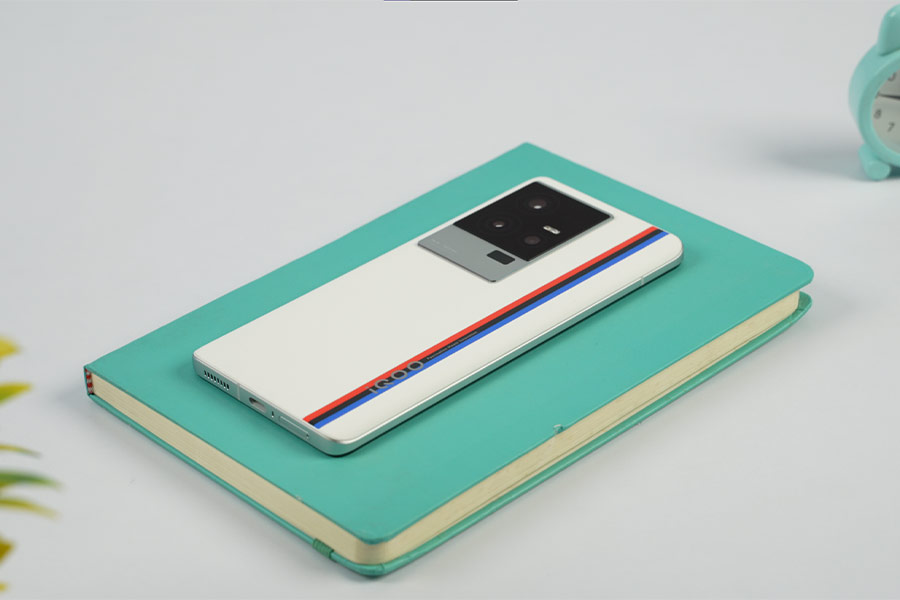
I must say I’m not a big fan of how wide it is though. I guess that’s to be expected from a gaming phone but this tall, broad form factor means using the iQOO 11 in one hand has been a constant struggle. Especially for someone like me with small hands. And since iQOO has chosen to put the in-display fingerprint reader so far down, even unlocking the phone has become an irritating thumb exercise. But perhaps the biggest letdown here is that iQOO 11 still does not have any form of IP rating despite that significant price jump.
Display
- 6.78-inches 2K QHD E6 AMOLED panel
- 144/300Hz refresh/touch sampling rate
- 1100 nits (peak) brightness, 1800 nits (HDR)
- Corning Gorilla Glass Victus protection
As for the display, iQOO has thrown in all the big numbers you’d expect from a flagship smartphone on this guy. Including a sharp 2K resolution, 144Hz refresh rate, 300Hz touch sampling rate, LTPO 4.0, and the brand new E6 AMOLED panel made by Samsung. And most of that translates to an excellent viewing experience in real-life usage as well. I found that its default color calibration is especially stunning with fairly natural colors, contrast, white balance, and such.
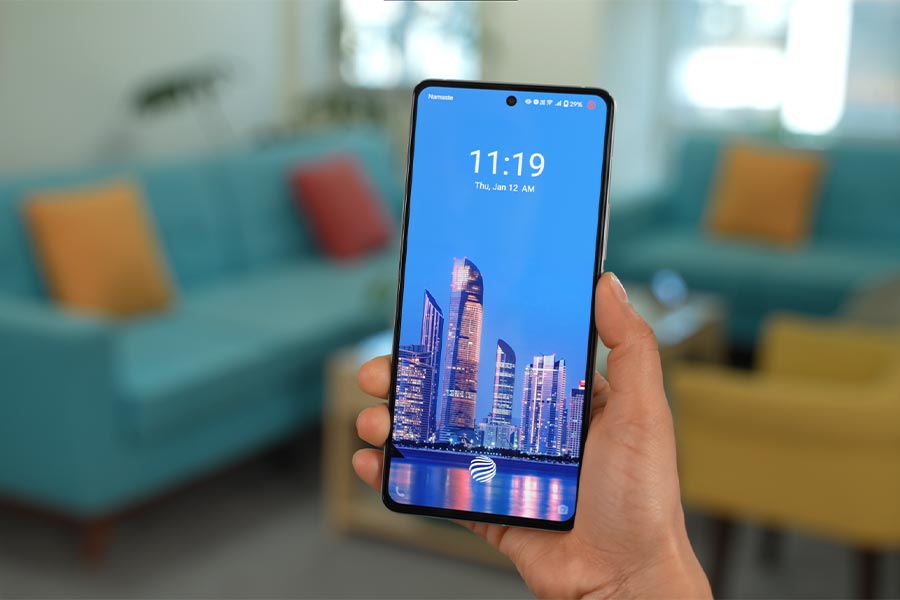
Outdoor visibility hasn’t been a problem either since that E6 panel can hit an impressive 1100 nits at best—although it seems that the company is mostly marketing the 1800 nits HDR peak brightness number only. So in case you’re unaware, this 1800 nits max brightness simply refers to a short, local burst of brightness when watching HDR videos. And yes, watching HDR content on Netflix was really nice having the bright highlights shine through in shows like Arcane.
Not true stereo speakers
On that note, iQOO 11’s stereo speakers also get quite loud and the overall audio quality sounds rich and detailed. But since it’s still using the earpiece as the second channel speaker, there is some imbalance in the sound output.
Is this really a 144Hz display?
Another (sort of) controversial spec about this phone’s display is the 144Hz refresh rate. I was nearly ready to send my unit for replacement because it was maxing out at just 120Hz, but apparently, that’s how iQOO has tuned things here. Be it system or most third-party apps, 120Hz is all you get. And only some handpicked games and benchmarking apps like Genshin Impact, AnTuTu, Geekbench, and 3DMark have been optimized to run at 144Hz for some reason.
That’s next to useless.
It’s not that the 8 Gen 2 can’t handle 144Hz—even at 2K resolution—so this has more to do with iQOO prioritizing thermals and power consumption above somewhat smoother UI response. I’ve used a few 144Hz smartphone displays before and I’m not saying it’s a drastic upgrade over 120Hz or anything, but the way things are, I think calling this a 144Hz display is purely misleading.

Likewise, the iQOO 11’s resolution is also set to Full HD by default instead of 2K. But I honestly don’t care about such high-res smartphone screens because I can’t really tell the difference between FHD and QHD… 99% of the time. On top of this, a lower resolution also means better battery life so it’s a win-win situation for me.
Battery
- 5000mAh with 120W fast charging
- No wireless charging support
That reminds me, iQOO has also upgraded to a big 5000mAh battery on this phone, even though its actual endurance is just above-average. Under a medium usage pattern with casual web browsing, some gaming, and taking lots of photos, I’ve only been getting roughly 6 hours of screen-on time. 7 hours if I really pushed it. But iQOO 11 does support wicked-fast 120W charging that fills up the phone completely in around 25 minutes.

And I must compliment iQOO for this charger. Not only does it come bundled inside the box itself, but it also supports up to 65W USB-PD and PPS charging protocols. Normally what we’ve seen from brands like Xiaomi is that their proprietary fast-charging technology requires a specialized charger that isn’t compatible with universal standards like the ones above.
Cameras
- Triple camera setup at the back
- (50MP main, 8MP ultrawide, 13MP telephoto)
- 16MP selfie camera (hole-punch)

Finally, let’s now talk about the cameras. The iQOO 11 has a 50MP Samsung GN5 primary sensor with OIS, complemented by a 13MP telephoto camera capable of 2x optical zoom. And surprisingly, there’s a downgraded 8MP ultrawide sensor in place of a 13MP camera whereas it’s still got the same old 16MP selfie shooter.
Normal Images
And credit where credit’s due—iQOO 11 indeed shoots nice photos during the day with plenty of details and good dynamic range. It does prefer quite punchy saturation by default which can result in images looking a bit overprocessed sometimes.
But you can always sort it out by turning on the “Natural Color” mode which brings much more natural-looking colors.
Ultrawide, Telephoto Images
I also like how all three of its cameras have so similar image processing most of the time.
Usually what I’ve seen from other Chinese smartphone brands (even in the premium midrange segment) is that they produce somewhat different results from their primary and other cameras but iQOO is quite the exception.
Portrait Images
iQOO 11 does struggle a little with portraits though—even from that telephoto camera. From contrast, exposure handling, and depth estimation, to the subject’s skin tone, I think iQOO could’ve done a better job.
Selfie Images
As for selfies, it’s quite the opposite. I like how it manages balanced composition with good details and everything else.
Nighttime Images
The low-light images from iQOO 11 are also pretty great.
It handles light glares just fine while the colors come off quite pleasing too. Highlight control is something that could be improved with future updates but overall, its nighttime photography is a solid A.
Videography
Moving on, iQOO 11 lets you shoot up to 8K 30 fps videos but I’m more than happy with my 4K recordings. At both 30 and 60 fps modes, the videos are decently steady and I also like how you can switch between the main and telephoto camera while you’re filming.
You can switch to 1080 / 60 fps for the most stable results but do note that it uses frame cropping for such results. Now, this sounds pretty great and all but iQOO 11’s selfie video situation is just embarrassing. Forget 4K recordings, it doesn’t even support 1080 / 60 fps videos! Why do so many Chinese smartphone brands overlook selfie videos in this day and age, I’ll never understand.
iQOO 11 Review: Conclusion
Summing up this review, iQOO 11 is an interesting phone, to say the least. It absolutely nails the performance and gaming aspect and I think this will continue to remain a solid contender throughout 2023 as far as pure performance is concerned. Likewise, its display and cameras are also quite impressive—although I wouldn’t call iQOO 11’s cameras flagship level in any way.
You’ll consistently get better photos from something like the Pixel 7—especially in daylight conditions. So yeah, it certainly looks like we have a solid flagship killer in our hands with the iQOO 11. It does miss out on some important features like IP rating, wireless charging, and such, but you can’t have it all at those prices anyway.
The dilemma
I guess the biggest dilemma with everyone who’s considering this is if they should go with other established companies that have good brand value like the Pixel 7 or the iPhone 13. Instead of spending well over INR 50,000 on an iQOO phone. After all, iQOO 11 even got quite a steep price hike compared to both iQOO 9 and iQOO 9T before it. No wonder the iQOO 11 Pro didn’t make it to the international market. Because at such high prices, this Vivo sub-brand simply can’t compete against the top dogs in the premium arena.
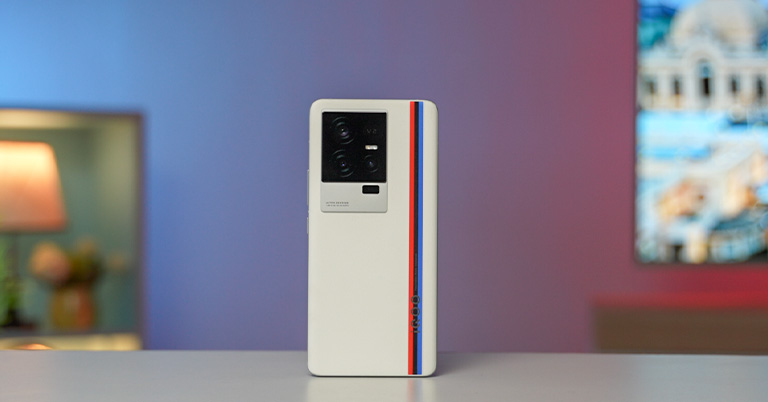
OnePlus figured this out as well and has even confirmed that it won’t launch a “Pro” model of its flagship phone this year. And if I were you, I’d actually wait for its comparisons against the new OnePlus 11. Which we’re also coming up with, by the way. Besides better brand value and better software experience, it also has a more versatile set of cameras. And that could just end up making the biggest difference when deciding between these two phones.
- Watch our video review of iQOO 11
iQOO 11 Review: Pros and Cons
Pros
- Excellent performance
- Organic leather feels nice to hold
- Great display overall
- Decent battery endurance
- 120W fast charging
- Fairly dependable cameras
Cons
- Still no IP rating
- Could be a bit too wide for some
- Not really a 144Hz display
- No 4K selfie video recording option






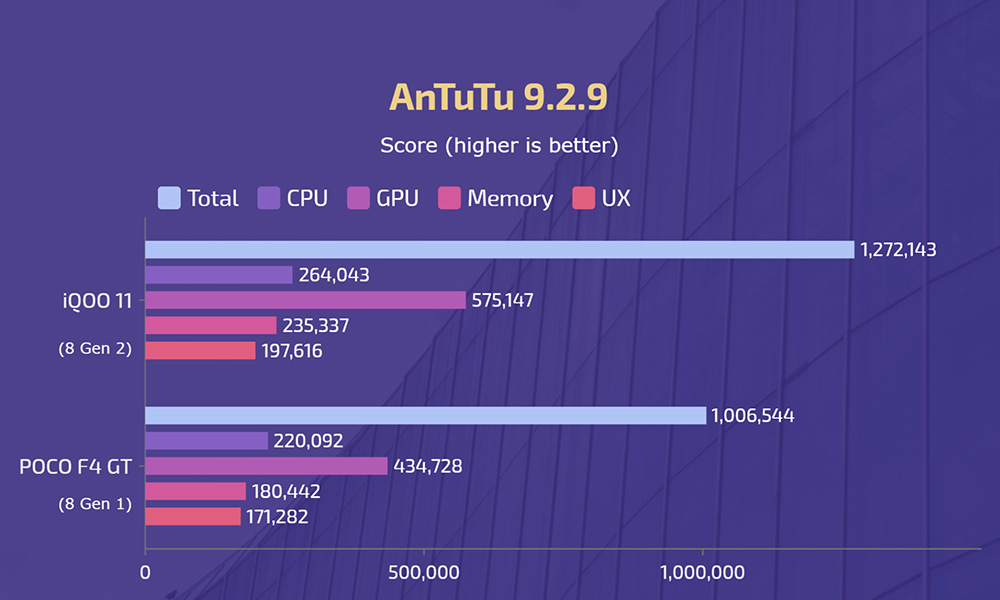


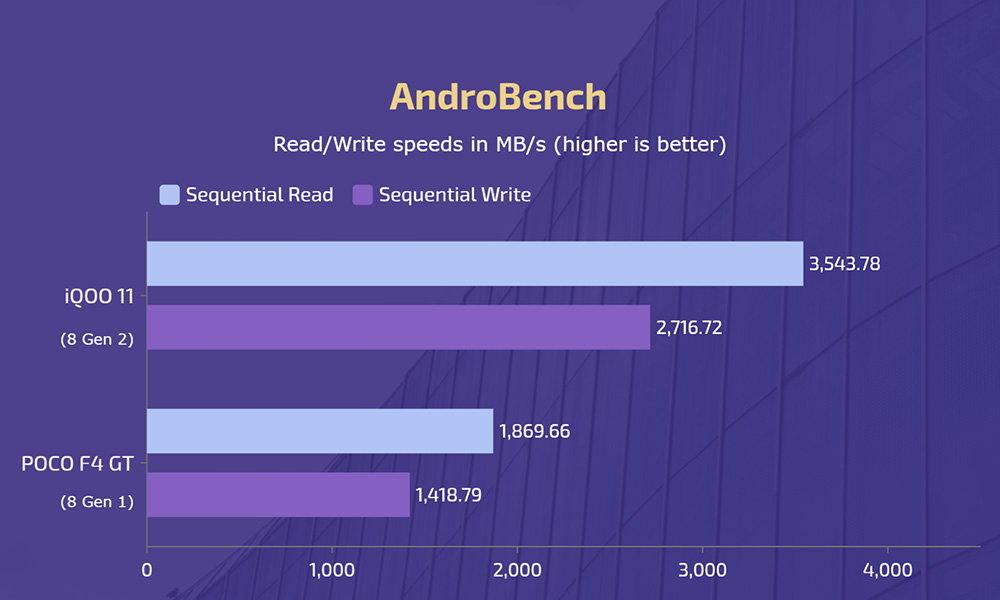









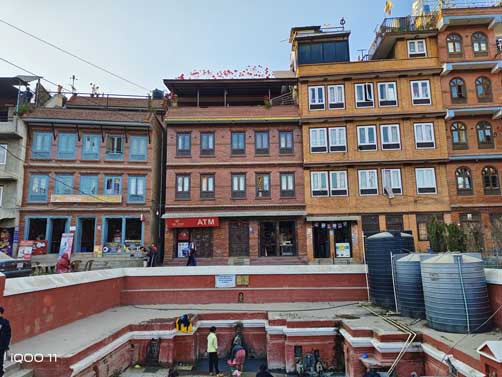





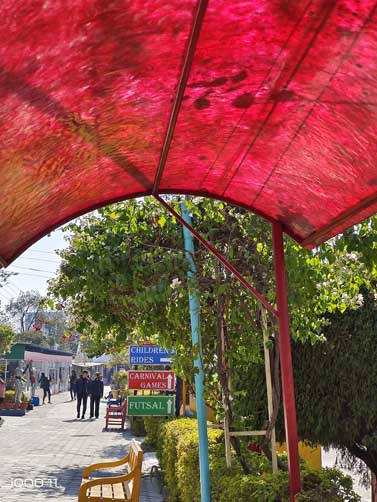
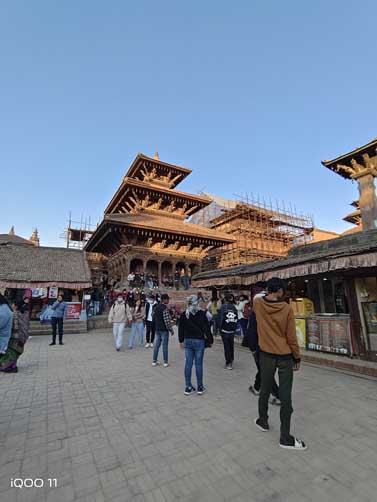
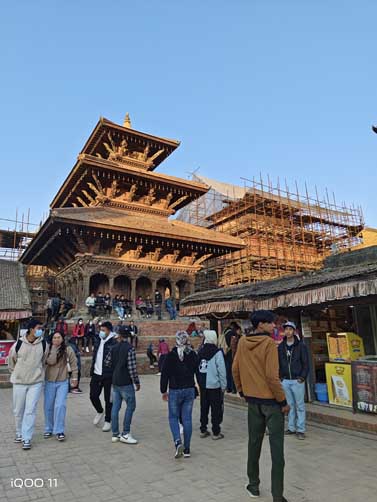










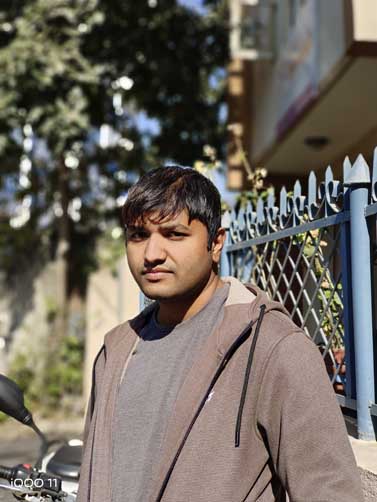





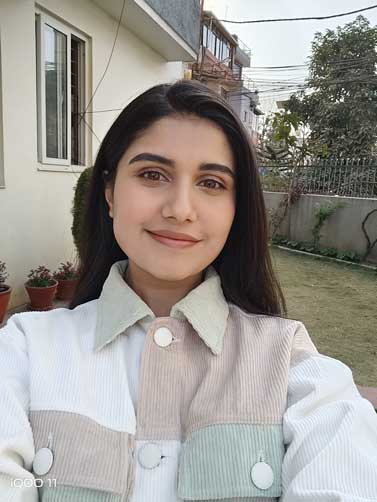










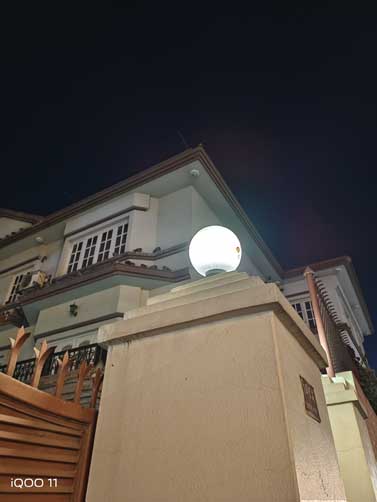

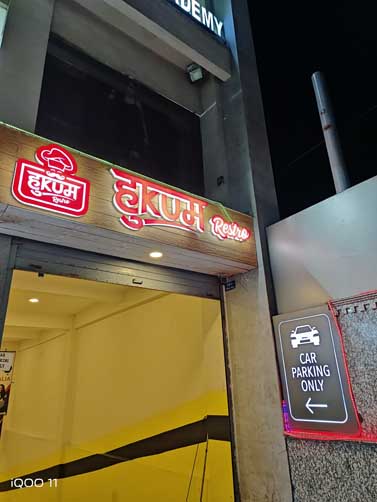












![Best Gaming Laptops in Nepal Under Rs. 250,000 (रु 2.5 Lakhs) [2025] Best Gaming Laptops Under 2.5 lakhs in Nepal [Feb 2025 Update]](https://cdn.gadgetbytenepal.com/wp-content/uploads/2025/02/Best-Gaming-Laptops-Under-2.5-lakhs-in-Nepal-Feb-2025-Update.jpg)
![Best Gaming Laptops in Nepal Under Rs. 120,000 (रु 1.2 Lakhs) [2025] Best Budget Gaming Laptops Under Rs 120000 in Nepal 2025 Update](https://cdn.gadgetbytenepal.com/wp-content/uploads/2025/05/Best-Budget-Gaming-Laptops-Under-Rs-120000-in-Nepal-2024-Update.jpg)
![Best Laptops Under Rs. 80,000 in Nepal [2025] Best Laptops Under 80,000 in Nepal March 2025 Update](https://cdn.gadgetbytenepal.com/wp-content/uploads/2025/03/Best-Laptops-Under-80000-in-Nepal-March-2025-Update.jpg)
![Best Gaming Laptops in Nepal Under Rs. 200,000 (रु 2 Lakhs) [2025] Best gaming lapotp under 2 lakhs Nepal Feb 2025](https://cdn.gadgetbytenepal.com/wp-content/uploads/2025/01/Best-Gaming-Laptops-Under-2-Lakh-Nepal-Feb-2025-Update.jpg)

![Best Mobile Phones Under Rs. 15,000 in Nepal [Updated 2025] Best Phones Under 15000 in Nepal 2024 Budget Smartphones Cheap Affordable](https://cdn.gadgetbytenepal.com/wp-content/uploads/2024/03/Best-Phones-Under-15000-in-Nepal-2024.jpg)
![Best Mobile Phones Under Rs. 20,000 in Nepal [Updated] Best Mobile Phones Under NPR 20000 in Nepal 2023 Updated Samsung Xiaomi Redmi POCO Realme Narzo Benco](https://cdn.gadgetbytenepal.com/wp-content/uploads/2024/01/Best-Phones-Under-20000-in-Nepal-2024.jpg)
![Best Mobile Phones Under Rs. 30,000 in Nepal [Updated 2025] Best Phones Under 30000 in Nepal](https://cdn.gadgetbytenepal.com/wp-content/uploads/2025/01/Best-Phones-Under-30000-in-Nepal.jpg)
![Best Mobile Phones Under Rs. 40,000 in Nepal [Updated 2025] Best Phones Under 40000 in Nepal 2024 Smartphones Mobile Midrange](https://cdn.gadgetbytenepal.com/wp-content/uploads/2024/02/Best-Phones-Under-40000-in-Nepal-2024.jpg)
![Best Mobile Phones Under Rs. 50,000 in Nepal [Updated 2025] Best Phones Under 50000 in Nepal](https://cdn.gadgetbytenepal.com/wp-content/uploads/2025/01/Best-Phones-Under-50000-in-Nepal.jpg)
![Best Flagship Smartphones To Buy In Nepal [Updated] Best flagship phone 2025](https://cdn.gadgetbytenepal.com/wp-content/uploads/2024/07/Best-Flagship-Phones-who-is-it-ft-1.jpg)